Why Custom Watch Straps Are Essential for B2B Sellers Today?
The global watch market, significantly energized by the explosion of smartwatches, is undergoing a transformation. Consumers, particularly younger demographics, are no longer just seeking timekeeping devices; they crave personalization and unique style expressions. This trend presents a massive opportunity for B2B sellers, whether you’re supplying Amazon FBA businesses, local e-commerce platforms, or developing products directly.
Custom watch straps have emerged as a key differentiator. Adding a unique logo, pattern, or design element allows brands to:
- Strengthen Brand Identity: Consistent branding across products builds recognition.
- Increase Perceived Value: Custom touches add a layer of exclusivity and quality.
- Meet Market Demand: Cater directly to consumers seeking personalized accessories.
- Stand Out: Differentiate your offerings in a crowded marketplace.
However, the best customization method depends heavily on the strap material. Each material interacts differently with various techniques. This guide provides B2B sellers and product developers with a clear overview of popular customization methods for different watch strap materials, helping you choose the perfect technique for your brand and products.
Customizing Steel Watch Straps
Steel straps offer durability and a premium aesthetic. Customizing them effectively requires techniques that work well with metal surfaces.
Laser Engraving
- What it is: A high-precision process using a laser beam to etch designs directly onto the metal surface.
- Features: Creates permanent, highly detailed markings with sharp lines. The result is typically a subtle contrast change on the metal.
- Best Use Cases: Ideal for intricate logos, fine text, serial numbers, or sophisticated branding elements where longevity is crucial. Excellent for subtle, high-end branding.
- Advantages:
- Extremely durable and wear-resistant; won’t fade or rub off.
- High level of precision for complex details.
- Clean, professional finish suitable for premium products.
- Limitations:
- Typically produces a monochrome effect (contrast change, not color).
- Can be slower and potentially more costly than printing for very large surface areas.
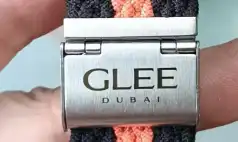
Silk Screen Printing
- What it is: Applying ink onto the strap surface through a mesh screen stencil.
- Features: Allows for the application of specific, vibrant colors.
- Best Use Cases: Suitable for applying bold, solid-color logos or simple graphics onto flat areas of the strap, like the clasp or specific links.
- Advantages:
- Offers a wide range of bright, opaque color options.
- Cost-effective for larger batches with simple designs.
- Limitations:
- Significantly less durable than laser engraving; prone to scratching and wear over time.
- Best suited for flat surfaces; achieving detail can be challenging compared to engraving.
Customizing Nylon Watch Straps
Nylon straps are popular for their comfort, durability, and casual style. Their fabric nature opens up different customization avenues.
Embroidery
- What it is: Stitching a logo or pattern directly onto the nylon fabric using thread.
- Features: Creates a textured, raised design with a distinct tactile feel.
- Best Use Cases: Works well for bolder text, simple logos, or crest-like designs. Adds a classic or rugged aesthetic.
- Advantages:
- Provides a unique, high-quality textured look and feel.
- Durable if done with quality thread.
- Offers a premium, crafted appearance.
- Limitations:
- Not suitable for very fine details or complex gradients.
- The back of the strap may show stitching (can be covered with lining).
- Can add slight stiffness to the embroidered area.
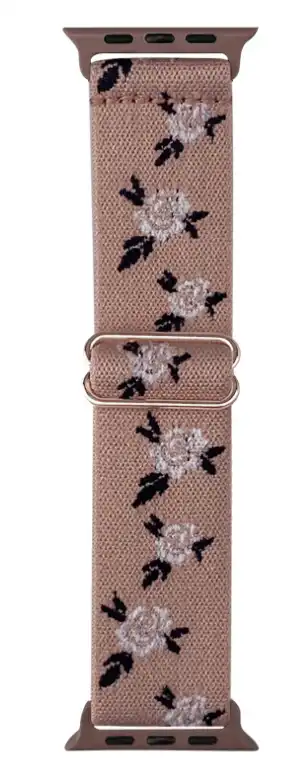
Silk Screen Printing
- What it is: Applying ink onto the nylon surface using the screen printing method.
- Features: Allows for smooth application of colors on the fabric surface.
- Best Use Cases: Good for graphic patterns, multi-color logos, or designs covering larger surface areas smoothly. Suitable for high-volume production.
- Advantages:
- Vibrant color reproduction.
- Relatively cost-effective for mass production.
- Can achieve smooth prints across the strap width.
- Limitations:
- Durability can be a concern; prints may fade or crack with heavy use and washing.
- Ink absorption can vary depending on the nylon weave.
Customizing Rubber & Silicone Watch Straps
Flexible, waterproof, and comfortable, rubber and silicone straps are staples for sports and smartwatches. Their surfaces require specific techniques.
Laser Etching/Engraving
- What it is: Similar to metal engraving but adapted for polymers. A laser removes or alters the surface material to create a design.
- Features: Creates precise, often subtly textured or debossed (indented) designs.
- Best Use Cases: Excellent for small, detailed logos or patterns, adding a subtle branding touch without using ink. Common on clasps or strap ends.
- Advantages:
- Permanent and highly durable marking.
- Clean, precise results for fine details.
- No ink involved, eliminating fading issues.
- Limitations:
- Typically monochrome (creates contrast, not color).
- Can be more expensive than printing methods.
- Effectiveness depends on the specific rubber/silicone compound.
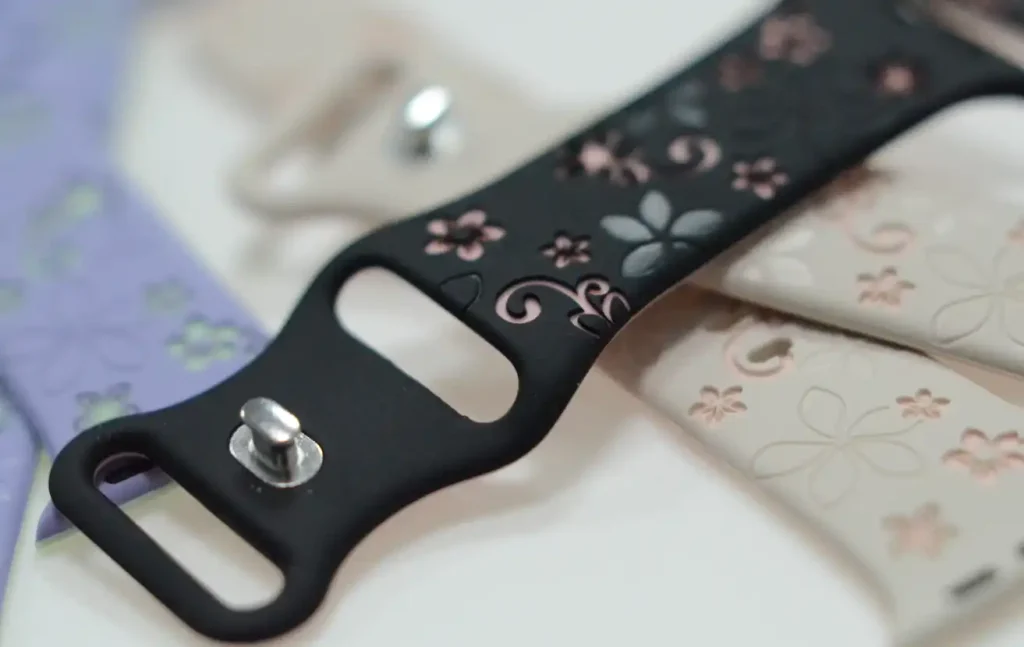
UV Printing
- What it is: A digital printing method where UV-curable inks are applied to the surface and instantly cured (dried) by ultraviolet light.
- Features: Produces vibrant, full-color, high-resolution prints directly onto the flexible surface.
- Best Use Cases: Ideal for complex, multi-color graphics, photorealistic images, or designs requiring bright, saturated colors, often seen on fashion or novelty straps.
- Advantages:
- Excellent color vibrancy and detail retention.
- Ink remains flexible with the strap material.
- Relatively cost-effective for complex, multi-color designs.
- Limitations:
- Durability can vary; prints may be susceptible to abrasion or stretching over long periods.
- Surface preparation is critical for good adhesion.
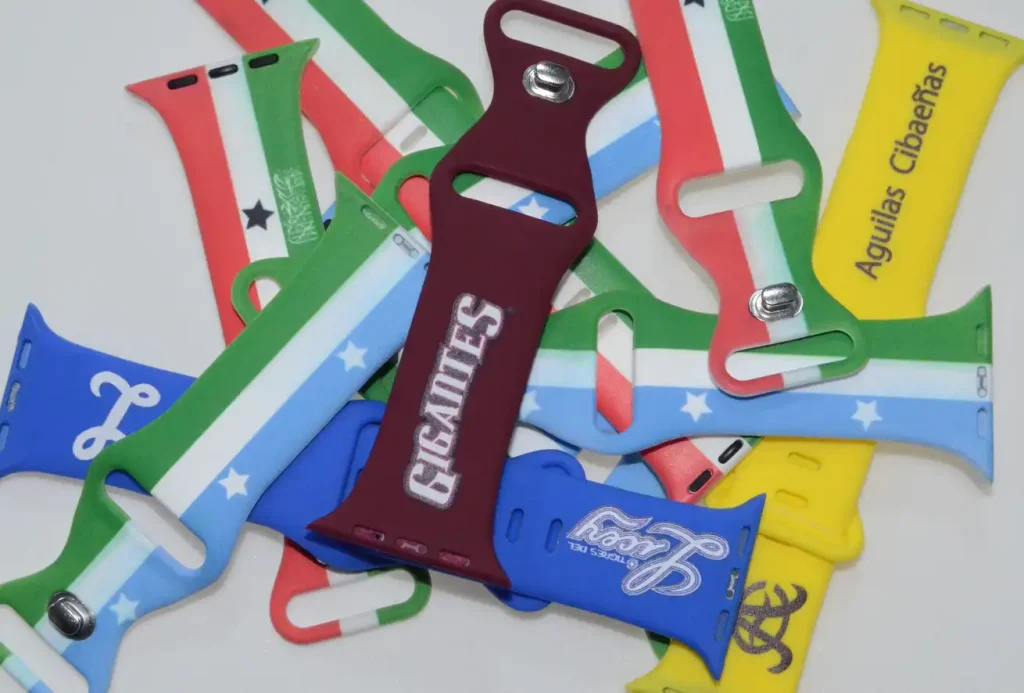
Heat Transfer Printing
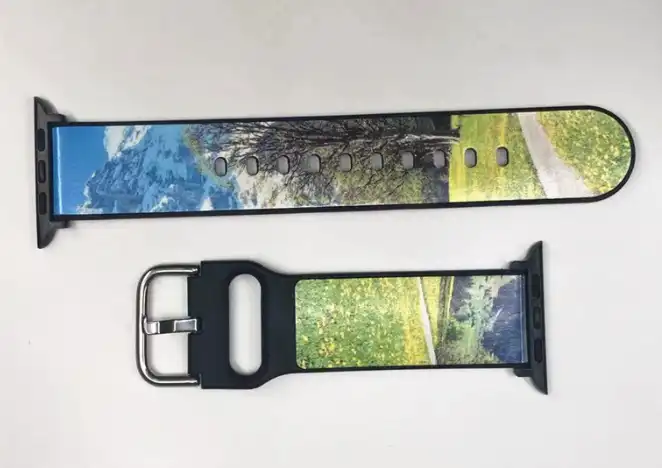
- What it is: A design printed on a special transfer paper is applied to the strap using heat and pressure.
- Features: Allows for complex, multi-color designs to be transferred onto the strap surface.
- Best Use Cases: Suitable for intricate patterns, gradients, or full-strap graphics where direct printing might be challenging. Advantages:
- Can reproduce complex and colorful designs effectively.
- Generally good durability compared to some direct printing methods on flexible surfaces.
- Limitations:
- The transferred layer can sometimes be felt on the surface.
- Edge alignment needs precision; potential for peeling over time if not applied correctly.
Customizing Leather Watch Straps
Leather straps convey classic style and luxury. Customization often focuses on enhancing this premium feel.
Debossing/Hot Stamping
- What it is: Using a heated die (stamp) to press a logo or design into the leather surface, creating a permanent indentation (Debossing). Hot stamping can also involve applying metallic or colored foil during the process.
- Features: Creates a subtle, tactile, and often luxurious recessed effect.
- Best Use Cases: Perfect for classic brand logos, monograms, or simple text. Enhances the perceived quality and craftsmanship. Commonly used on the strap underside or near the lugs.
- Advantages:
- Extremely durable and permanent.
- Adds a sophisticated, high-end touch.
- No inks to fade or wear off (unless foil is used, which can wear over time).
- Limitations:
- Not suitable for very intricate details or fine lines.
- Color options are limited (natural indentation or foil colors).
- Requires a custom die for each design.
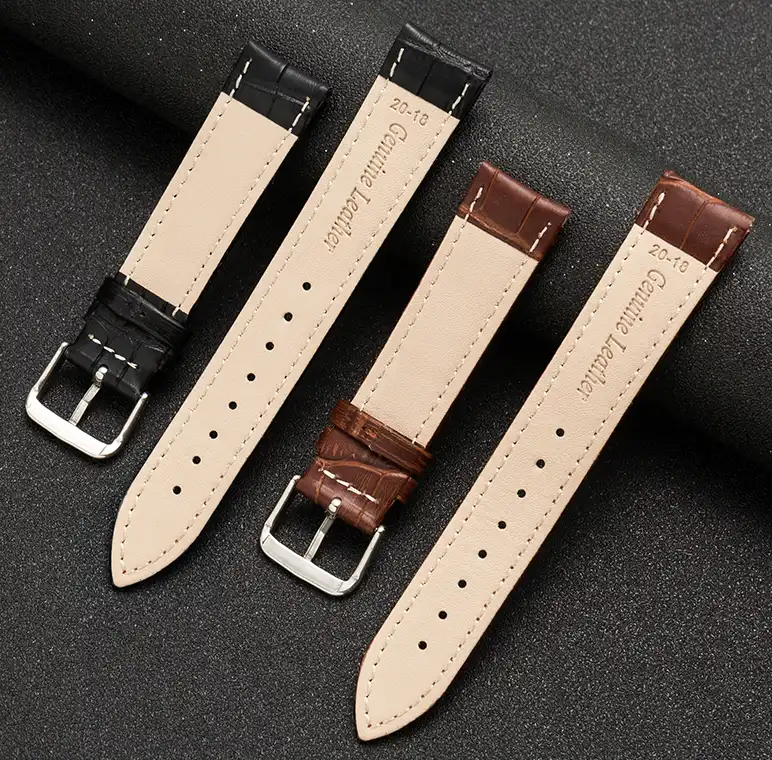
Conclusion: Choosing the Right Customization Method for Your B2B Needs
Selecting the ideal customization technique for watch straps depends on a combination of factors:
- Strap Material: As shown, different materials require different approaches.
- Design Complexity: Intricate details favour laser methods or UV printing; simple bold designs work well with screen printing or debossing.
- Desired Aesthetic: Consider if you want a subtle, premium look (engraving, debossing) or a bold, colorful statement (printing, embroidery).
- Durability Requirements: Engraving and debossing offer the highest permanence; printing methods vary.
- Budget & Volume: Some methods are more cost-effective for large batches (screen printing) while others have higher setup costs but unique results (debossing, embroidery).
By understanding these options, B2B sellers can make informed decisions to create custom watch straps that not only meet the growing demand for personalization but also effectively enhance brand visibility and product appeal. We recommend discussing these techniques with your manufacturing partners to determine the best fit for your specific product designs and target market. Investing in the right customization can significantly elevate your brand in the competitive watch and accessory market.
Tags: Custom Watch Straps, Leather Watch Straps, Metal Watch Bands, Nylon Watch Bands, Silicone Watch Bands
-1.png)